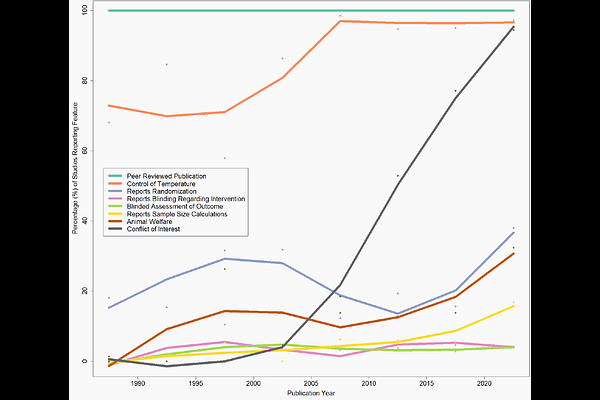Reporting quality, effect sizes, and biases for aging interventions: a methodological appraisal of the DrugAge database

Reporting quality, effect sizes, and biases for aging interventions: a methodological appraisal of the DrugAge database
Parish, A.; Ioannidis, J.; Zhang, K.; Barardo, D.; Swindell, W.; de Magalhaes, J. P.
AbstractThough interest has grown significantly over the past decades in interventions that may slow the aging process, most evidence for these interventions still comes from experiments in non-human animals. These studies may suffer from design, quality and reporting issues. The quality and reporting of preclinical studies have not yet been studied systematically in anti-aging research. Here we analyzed the DrugAge database, assessing reporting study quality, bias and effect sizes across 667 anti-aging preclinical studies. We found significant shortcomings in reporting of crucial design features such as randomization and blinding, as well as large variation in reporting quality and effects across species. Non-mammal findings typically did not translate to mammals. Although anti-aging interventions may have different effects depending on when they are started, most studies began giving the intervention under investigation very early in the organism\'s lifespan. Our findings suggest there is substantial room for improvement in preclinical anti-aging research.